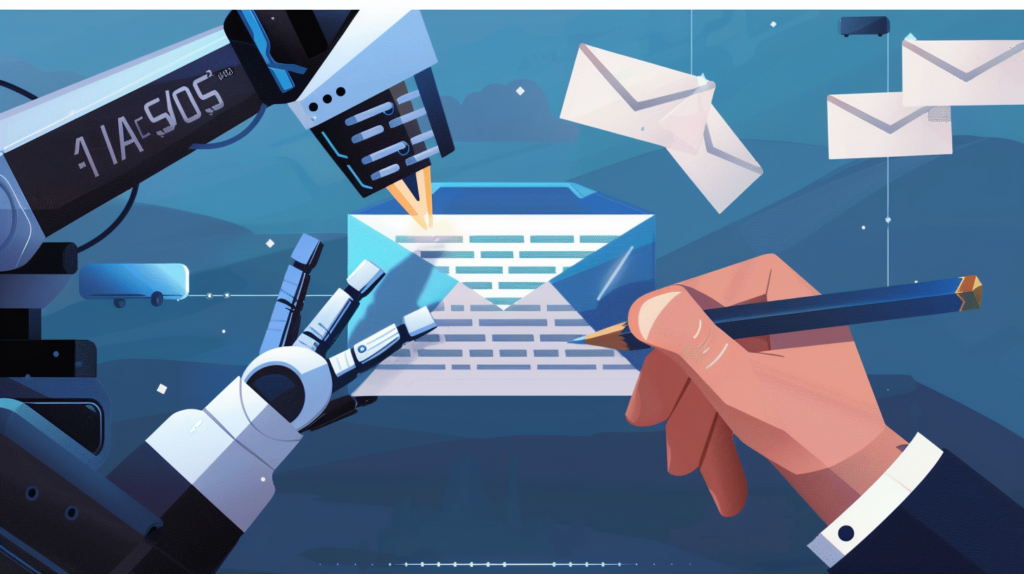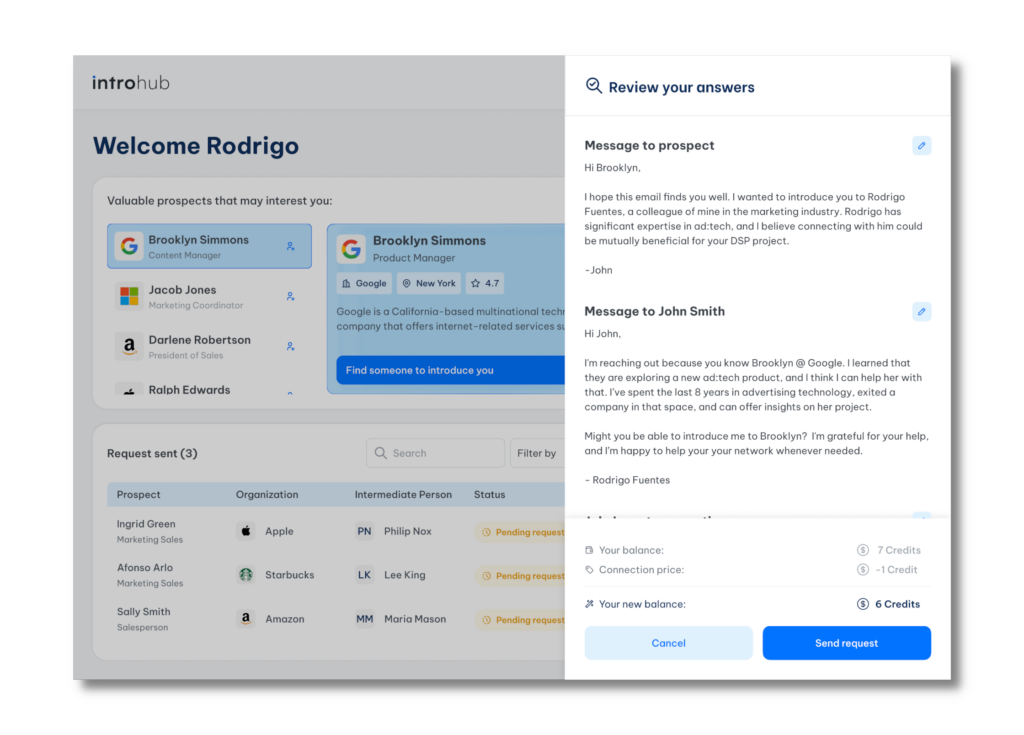In the ever-evolving world of business-to-business lead generation, staying ahead of the curve is crucial. The days of endless cold calls and generic email blasts are fading fast. As we step into Q2’2024, it’s time to explore innovative techniques to generate high-quality leads. In this article, we will delve into the world of lead generation and explore emerging trends that are shaping the sales industry.
The Evolution of Lead Generation
As technology advances and buyer behavior shifts, businesses need to adapt their lead generation strategies to stay relevant. Today, it’s all about rising above the noise, gaining attention long enough to build personal connections with potential customers, and providing value from the very first interaction.

One of the most significant downsides of outdated lead generation techniques is that they ooze automation. One telltale sign: messaging that lacks personalization. Nate Nasralla, author of Selling With, says that a personalized message is not ready to be sent until you would be embarrassed to send that same note to somebody else.
While spray-and-pray methods worked in the past, they fall short in today’s automation-aware and attention-deprived world. To succeed in 2024 and beyond, businesses must focus on leveraging emerging trends that prioritize (1) capturing attention and (2) convincing the recipient that they are not part of an automated campaign.
In this evolving landscape, generative artificial intelligence (GenAI), such as ChatGPT, was quickly hired to create scalable, personalized outreach. By analyzing vast amounts of text to identify patterns, sellers could easily tailor their baseline messaging by giving the GenAI system data about each prospect from their LinkedIn profiles. The goal is to streamline the lead generation process, increase efficiency, and deliver highly personalized experiences to their target audience. This works, and should continue to work – until prospects become jaded and realize that those ‘personalized messages’ are AI-generated and not borne from authentic human connection or interest in a prospect.
This approach is not limited to email, of course. Platforms like LinkedIn, Facebook, and Instagram provide businesses with unprecedented access to a global audience. By creating engaging content, participating in online conversations, and utilizing targeted advertising features, companies can attract and nurture leads in ways that were previously unimaginable. What’s new and different is the extent to which sellers and companies are leveraging GenAI to create the content shared on social media platforms. Once a bastion of human engagement, comments on social posts are quickly transforming into “have your robot talk to my robot.”
In prior eras, sellers could win through sheer volume (more calls! more emails! more comments!). That seems unlikely in light of GenAI’s ability to outpace humans on pure volume. And yet, Dr. Ian Malcolm teaches us that “Life Finds a Way.” Sellers can outperform AI, and here’s how.
From Cold Calls to Personal Connections
In this new era of lead generation, the focus is on building genuine, non-automated relationships and establishing trust. This shift has led to new techniques that prioritize human authenticity and tailored messaging.
For example, voice memos on LinkedIn are one such frontier. Another is recording videos and including them in prospecting emails. Above all, warm introductions are the gold standard for piercing through the digital noise and establishing a relationship.

Voice Memos on LinkedIn: A New Frontier
One exciting development in personalized outreach is the use of voice memos on LinkedIn. This technique allows businesses to not only personalize their messages but also convey genuine emotion and intent. By recording a short audio message, businesses can capture the attention of leads in a crowded digital landscape.
Furthermore, the use of voice memos adds a human touch to digital interactions, bridging the gap between face-to-face communication and online correspondence. The nuances in tone, inflection, and emotion conveyed through a voice memo can leave a lasting impression on leads, fostering a sense of trust and authenticity in the relationship.
Beware The Rise of Voice Cloning Technology
While the convenience of voice cloning technology is undeniable, businesses must be cautious of its potential drawbacks. The authenticity of a personalized voice message can be compromised if it is generated by an AI-powered clone. Striking the right balance between efficiency and human connection is crucial to maintaining trust and rapport with leads.
If you “trick” prospects into believing that you tailored an audio message for them, then you should expect poor engagement when they find out it’s actually an automated campaign. There is a narrow window of opportunity during which scaled, GenAI voice memos are an advantage. If you try this too soon, the uncanny valley of AI deepfake voices will ruin your authenticity. But you cannot do it too late because then all other sellers will have taught prospects that voice memos are just another automated touchpoint. Presciently, LinkedIn has limited the voice memo feature to its mobile app, largely preventing this kind of automation.
Video-Enhanced Emails for Authentic Engagement
In the pursuit of genuine human connection in digital sales outreach, video-enhanced emails have emerged as a powerful tool. Platforms like Vidyard empower sales development representatives (SDRs) to “video-ify” their email content, creating engaging presentations that convey emotion and intent far beyond what text alone can achieve.
Personalized videos sent to each prospect not only capture attention in a crowded digital landscape but also add a palpable human touch to digital interactions. The power of video lies in its ability to convey the subtle, yet impactful, elements of personal communication that text-based emails lack. A smile, a pause, a laugh – these human elements can transform a standard sales pitch into a memorable conversation. This approach reiterates the sender’s dedication to personal engagement, standing as a testament to the value they place on each prospect.
While video emails offer a high level of personal engagement, their success hinges on overcoming the modern inbox cesspool. Even the most heartfelt video message can miss its mark if it doesn’t navigate the digital gauntlet of spam filters and sorting algorithms.
The Challenges of Email Deliverability
In 2024, every inbox is overflowing. As a result, spam filters and email algorithms have grown increasingly sophisticated. Establishing trust with internet service providers (ISPs) and email clients is essential for ensuring that your emails land in the primary inbox rather than the dreaded spam folder. Even then, reputable senders’ emails are sequestered in recipients’ “other” inboxes.
In short, building a strong sender reputation is necessary – and yet not enough. Below is another approach that leverages warm outreach to bypass email deliverability issues.

Warm Introductions Lead the Way
Warm introductions are the gold standard of lead generation in 2024. Unlike cold outreach, warm intros leverage connections and endorsements to establish trust and credibility from the get-go. This approach has proven to be highly effective in accelerating sales cycles and improving conversion rates.
An emerging trend that simplifies the process of warm introductions is the use of platforms like SellersCrowd, PitchFire, and IntroHub. Such tools enable sellers to connect with potential leads. By tapping into known – and even unknown – connectors, sellers can find the best introducer and increase the likelihood of success.
Convincing an introducer to connect you to a target prospect is pivotal. In many cases, connectors are motivated by the opportunity to offer value to the prospect. Whether it’s solving a problem for the prospect or keeping their network active, the introduction must serve a purpose beyond just making a sale. Once agreed, the introduction can take many forms, from a simple email cc’ing all parties to initiating a group chat on LinkedIn, bypassing digital noise and significantly increasing the chances of engagement.

For best results, combine warm intros with intent data to narrow down prospects genuinely in the market for your solution. This will help you maximize the relevance and timing of your introduction request.
Conclusion
As we power through 2024, it’s clear that the landscape of lead generation is undergoing a significant transformation. Cold outreach is increasingly giving way to techniques that prioritize genuine, human-scale interactions. The integration of advanced personalization tools with strategies like warm introductions presents a promising avenue for businesses willing to innovate and adapt. In the evolving business landscape, those who embrace these new methods will not only survive but thrive.
